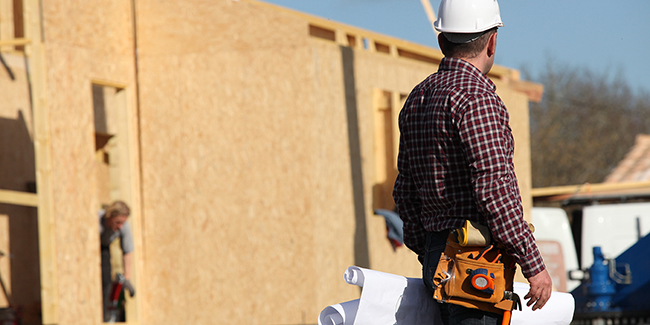A draw request is a formal request submitted to a lender asking for release of construction loan funds after completing a specific project phase. It includes invoices, lien waivers, completion photos, and timelines. Sekady streamlines this by letting contractors submit requests directly with all documentation attached, so lenders receive everything needed upfront.
Understanding Draw Requests: The Foundation of Construction Lending
Draw requests are the lifeblood of construction finance. If you're working in construction lending or project management, understanding how draw requests work isn't optional—it's essential to keeping projects funded, on track, and legally protected.
What exactly is a draw request?
A draw request is essentially a builder's formal ask to the lender: "We've completed this phase of work. Please release the funds we're entitled to receive." It's not just a casual email. It's a structured financial document that includes specific evidence of work completion and permission from subcontractors.
Think of it this way: the construction loan process is designed to protect everyone. The lender doesn't want to give all the money upfront because they need assurance that work is actually happening. The builder and subs need payment to keep the project moving. A draw request bridges that gap by proving work is complete before money changes hands.
What Goes Into a Draw Request?
When a contractor or project manager submits a draw request to a lender, they're expected to include:
| Document Type | Purpose | Why It Matters |
|---|---|---|
| Invoices | Proof of work performed and costs incurred | Shows what work was completed and validates the dollar amount being requested |
| Lien Waivers | Legal confirmation from subs/suppliers they won't file a lien | Protects the lender and borrower from future claims on the property |
| Completion Photos | Visual documentation of work progress | Provides evidence work actually happened; hard to dispute photos |
| Project Timeline | Updated schedule showing progress against plan | Confirms project is on track and helps lender understand remaining draw schedule |
| Permits & Inspections | Documentation that work passes local requirements | Ensures work meets building codes; critical for lender's interest in property value |
Sekady recognizes that collecting all this documentation manually is a nightmare. That's why Sekady's platform lets contractors upload everything directly through a portal, attach photos automatically, and track lien waivers digitally. Lenders receive a complete package instead of chasing down emails.
The Draw Request Process: Step by Step
Step 1: Contractor identifies milestone completion The builder completes a phase of work (foundation done, framing complete, electrical rough-in finished) and determines they've earned the next draw.
Step 2: Documentation is gathered Invoices are collected, lien waivers are signed, completion photos are taken, and the schedule is updated. This is where most delays happen—manually coordinating with subs to get signatures and documents together.
Step 3: Request is submitted to lender The draw request package is submitted to the lender with all supporting documentation. With Sekady, this happens through the platform with everything timestamped and organized.
Step 4: Lender reviews for completeness The lender's team reviews the request to make sure all required documents are included and the request follows the loan agreement terms.
Step 5: Inspection is scheduled Most lenders require a third-party inspector to verify that the work described in the draw request is actually complete. With Sekady, inspection orders are automatically triggered and assigned.
Step 6: Inspector verifies work The inspector visits the site, compares progress against the construction plans and the draw request, takes their own photos, and prepares a report. Modern platforms like Sekady let inspectors do this on mobile devices with automatic photo geotagging.
Step 7: Lender approves (or requests corrections) If the inspection confirms the work is complete, the lender approves the draw. If there are issues, the lender asks for corrections before approving. This is where clear communication becomes critical.
Step 8: Funds are disbursed Once approved, funds are released to the contractor (or sometimes directly to subs/suppliers). Sekady supports multiple payment methods—ACH, wire transfer, checks—so payment can happen immediately.
Why Draw Requests Matter in Construction Lending
For lenders, draw requests are the primary tool for controlling risk. Without structured draw requests, a lender has no way to ensure work is actually happening or that the project is staying within budget. Draw requests create accountability.
For builders and contractors, draw requests are how they get paid. They're the mechanism that converts completed work into cash flow. Understanding how to submit a proper draw request—with complete documentation—is the difference between quick funding and delays.
For subcontractors and suppliers, draw requests determine when they'll get paid. They need to make sure their work is documented and included in the draw request so they can verify payment before moving to the next phase.
Common Draw Request Issues (And How Sekady Prevents Them)
Incomplete Documentation: Contractor forgets to include a lien waiver or the photo documentation is unclear. Sekady Solution: Platform requires mandatory uploads and won't allow submission without all required documents. Everyone knows what's needed before they start.
Discrepancies Between Request and Inspection: Contractor claims 100% framing complete, but inspector finds it's only 80% done. Sekady Solution: System compares contractor's percentage claim with inspector's verified percentage and flags material discrepancies for review before approval.
Lost Documentation: Email with lien waivers and photos gets lost in someone's inbox. Sekady Solution: Centralized platform is the single source of truth. Nothing gets lost because everything lives in the system.
Delayed Inspections: No one knows when the inspection should happen, so it gets scheduled weeks after the draw request is submitted. Sekady Solution: Inspection orders are automatically triggered when a draw request is submitted, and inspectors are automatically notified.
Duplicate Payments: Same work gets paid twice because tracking wasn't clear. Sekady Solution: System tracks which draws have been funded and prevents duplicate submissions for the same work phase.
The Digital Transformation of Draw Requests
Ten years ago, draw requests meant printing documents, getting physical signatures, mailing things, and hoping nothing got lost. Today, forward-thinking construction lenders use platforms like Sekady that digitize the entire process.
Digital draw requests move faster. Documentation is collected once and used everywhere. Inspectors report from the job site in real time. Lenders can approve from anywhere. Contractors know exactly what's needed and when payment will happen.
The result? What used to take 2-3 weeks now takes 2-3 days. Projects stay funded. Relationships are smoother because there's clarity instead of confusion.
Best Practices for Submitting Draw Requests
- Start gathering documentation early - Don't wait until the draw request deadline to collect lien waivers and invoices. Have subs sign waivers as they complete their work.
- Take comprehensive photos - Take photos from multiple angles, timestamp them, and include them with your draw request. Clear photos prevent inspection disputes.
- Keep your budget updated - Make sure your Schedule of Values is accurate and updated with any change orders. Draw requests that don't align with the approved budget will get rejected.
- Communicate with your lender - If you're approaching a draw deadline or anticipate completion earlier than expected, give your lender a heads up. Proactive communication prevents surprises.
- Use a platform like Sekady - If you're managing draws manually, you're wasting time. Platforms automate the collection, organization, and submission of everything a lender needs.
- Verify your inspector understands the work - Give your inspector context about what you're claiming as complete. A 5-minute explanation can prevent inspection issues that delay payment.
The Bigger Picture: Draw Requests in Construction Lending
Draw requests are more than just paperwork. They're the operational mechanism that makes construction lending work. They create transparency, control risk, and enable trust between lenders, builders, and subcontractors.
For construction lenders looking to scale their business, mastering draw request management is essential. For builders looking to get faster funding, submitting complete, accurate, and timely draw requests is table stakes.
Sekady's platform was built specifically to make draw requests faster, clearer, and less error-prone. By automating the collection and organization of documentation, streamlining inspections, and creating a single source of truth, Sekady helps everyone move through the draw request process more efficiently.
Want to see how Sekady streamlines draw requests at your organization? Check out our Frequently Asked Questions page to learn more about how construction loan management should work.



